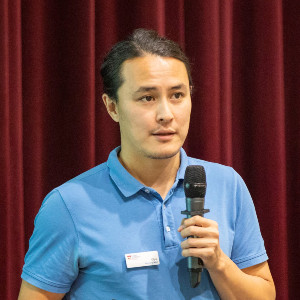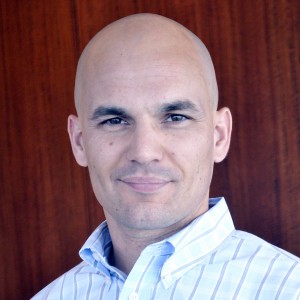At the end of the case interview, what should we do as a closing conclusion? How would you structure a synthesis? Including problems, short solutions, why is that solution (insights), and risk/mitigations? Is there a time gauge of how much is too much? Also can we ask interviewers for feedback about the case?
At the end of the case interview, what should we do as a closing conclusion? How would you structure a synthesis?


Hi Charles and Olzhas,
as a structure for the conclusion, I would recommend the following three steps:
1) Repeat the objective. This will ensure you are indeed answering to what is relevant for the case. Forget to repeat the objective is one of the most common mistakes candidates do in the conclusion and can lead to answer to the wrong question. As an example:
- “Our goal was to understand (i) why profits are declining and (ii) how we could increase profits by XYZ”
2) Provide an answer-first solution. You don’t have to present everything you discovered in the case at this stage, only the main conclusion and its supporting factor. If the conclusion is not clear 100% as you have not analyzed all the elements of your structure to derive a definite yes or no, you can provide a preliminary answer based on the elements you have identified.
- “After our initial analysis, we found out that profits are declining due a decrease in revenues in division 1 and that, in order to increase profits, with the information we have so far it seems a good idea to enter Market A. This is based on the following reasons:
- [SPECIFIC FINDINGS 1]
- [SPECIFIC FINDINGS 2]
- [SPECIFIC FINDINGS 3]”
3) Provide risks / next steps suggestions. You should always have next steps/ risks in your conclusion. You can refer to the elements present in your structure that you did not have time to cover or to risks emerged during the case:
- “As additional elements, we would like also to consider the following …[RISKS/NEXT STEPS]”
You should spend around one minute to deliver a conclusion. The interviewer may give you a shorter time constraint (usually minimum 30 seconds), thus you should also practice for shorter allocations of time.
I would never ask for feedback on your performance at the end – it’s a sign you are uncertain on your performance and kills the confidence of the interviewer in you.
Hope this helps,
Francesco


Hi,
First of all, here are the general ways to provide the recommendation:
- Always take 30 seconds to structure your recommendation. Never give a recommendation without taking time for preparation
- After taking the time - check the objective. The worst thing you can do is answering the wrong question
- Spend 30 seconds on structuring the recommendation and collecting the numbers supporting your arguments from your case notes
The typical structure is the following:
- What was the objective
- Your recommendation
- Arguments why the recommendation is valid (2-4 arguments) with the supporting numbers
- Additional things you would like to explore. In the order of priority:
- Things you still need to explore / data you need to get in order to provide a valid recommendation (Very typical for McKinsey cases where the interviewer guides you and interrupts in the middle of the case to provide a conclusion
- Things you've slightly covered during the case but have not come to a particular measurable solution or were not the part of the original objective (e.g. alternative growth options or some questions on creativity)
- Risks
- Next steps
For example:
- Our objectives were to understand why the profit is declining by X and how to bring the profit back within one year (Don't forget that your objective should be measurable in terms of money / other metric and time)
- According to the analysis we've done so far, my recommendation is to shut down the division A and to concentrate on the divisions b/c if we want to increase the profit, and there is a number of reasons for that.. (Remember that your arguments should include numbers).
- You provide the arguments a) First of all, problems in Division A are the major driver of the decline in profits - 90% of the decline in profits refer to Division A. b) Secondly, the decline is driven by the contracting market size that is shrinking at xx percent and is not expected to improve in the near future. c) Finally....
- Additionally, I would like to check the following... (In the last bullet, you simply provide a list of other things you have discussed, but they were not the part of the original objective / the things you slightly discussed but haven't come to any conclusion, like the questions on creativity)
The problem is that In many cases, you can't provide a definite answer since you don't have enough information
Consultants may be testing several things:
- Are you comfortable enough with providing preliminary recommendations based on limited data? (Imagine a CEO whom you met in the elevator and who wants to know the preliminary findings)
- Will you make a mistake of providing a recommendation with a high level of certainty without having a proper supporting data?
Imagine a case when you have to make a decision whether a PE fund should acquire a company. You make a proper structure (Market, Competitors, Company, Feasibility of Exit) and in 25 min of a case, you've managed only to go through the Market and Competitors branches of the analysis. What will be your recommendation?
In this case, you have to provide a Soft Recommendation:
- You start with an objective ("Our objective was to understand whether we should buy this company")
- You provide a preliminary recommendation highlighting the uncertainty("According to the limited data we have so far, our preliminary recommendation is to buy this company and there are three reasons for that..." or "Purely based on the data we have about the market it looks like it's a good idea for a number of reasons..")
- You provide the reasons ("First of all the market is big at X and growing at Y, Secondly the competition is fragmented with the target company having x% of the market. Thirdly...")
- You Mention the pieces of data that you need to provide a full recommendation ("But to come up with a final recommendation I would like to look at the company financials, key capabilities and..." or "But to be 100% sure in our recommendation we need to check...)
Best,
Vlad


Francesco's answer is spot on. I teach it slightly differently though, to really accentuate the various steps and make sure you are following the pyramid principle:
1. Ask for time; in my experience, everyone will give you a minute... except at BCG where they say "client is in your office, drop your pen, look up, go". There's no downside to asking anyway, it can only help you
2. Repeat the initial objective to level set
3. State & number your recommendations; a list will do here
4. Go back over each recommendation, explain what you found, how that's relevant, and how that will benefit the customer. If a recommendation needs to come before another one, or one is 90% of the answer, make sure to bring this up as well
5. Next steps. Two options here: either (5a) you aren't done and need to analyze a couple more things in order to confirm the interim recommendation, say so; or (5b) you are pretty much done with the analysis, and you offer to implement (especially in large consultancies, who will always have people ready and able to help implement) or bring up the next improvement possible and thereby sell another project
It's preferable you don't ask for feedback as it puts the interviewer in an awkward situation especially if it's face-to-face. I would also that if you mention the probabliity of the risks happening would be a nice touch as well.














